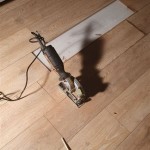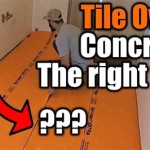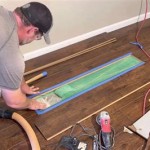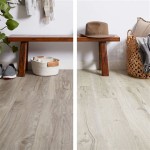The Difference Between Engineered Wood and Solid Flooring
Selecting the right flooring for your home is an important decision, as it impacts both the aesthetics and longevity of your living space. Two popular choices often come up: engineered wood flooring and solid wood flooring. While both offer a natural wood look, they differ in their construction, durability, and overall cost. Understanding these differences can help you make an informed decision that best suits your needs and budget.
Construction and Composition
The most significant difference between engineered wood and solid wood flooring lies in their construction. Solid wood flooring consists of a single piece of wood, typically 3/4 inch thick, that runs the entire length of the plank. Engineered wood, on the other hand, is constructed in layers. A thin veneer of hardwood, typically 1/16 to 1/8 inch thick, is glued to a core made of plywood or other engineered wood products. This construction provides stability and dimensional stability, making it less prone to warping or expansion and contraction due to changes in humidity.
Durability and Longevity
Solid wood flooring is known for its durability and longevity. It can be refinished multiple times, making it a good investment for homes that receive heavy foot traffic. However, its sensitivity to moisture can be a concern. Solid wood flooring may expand or contract with changes in humidity, leading to warping or cupping. Engineered wood flooring, due to its multi-layered construction, is more resistant to moisture and temperature fluctuations, making it a suitable choice for areas with higher humidity or where temperature variations are significant. While engineered wood can be refinished, the number of times is limited, depending on the thickness of the veneer layer.
Cost and Accessibility
Cost is a crucial consideration when choosing flooring. Solid wood flooring is generally more expensive than engineered wood flooring. This is due to the use of a larger amount of solid wood and the more labor-intensive installation process. Engineered wood flooring, while less expensive, still offers a natural wood aesthetic and is readily available in a variety of styles, colors, and finishes. Furthermore, engineered wood flooring can be installed over existing subfloors, eliminating the need for extensive subfloor preparation, which can further reduce installation costs.
Installation and Maintenance
Both solid and engineered wood flooring require professional installation for optimal results. Solid wood flooring, due to its thickness, needs a subfloor that is level and free of any defects. Engineered wood flooring, with its more stable construction, is more forgiving in terms of subfloor imperfections. Maintenance involves regular sweeping and vacuuming to remove dust and debris. Both types of wood flooring benefit from periodic cleaning with a wood floor cleaner to maintain their shine and protect them from dirt and grime. Solid wood flooring requires periodic sanding and refinishing to restore its original appearance, while engineered wood flooring may only need refinishing once or twice over its lifetime.
Environmental Considerations
Both solid and engineered wood flooring contribute to a more sustainable lifestyle. Wood is a renewable resource and, if sourced responsibly, can be a more environmentally friendly option compared to other flooring materials like vinyl or laminate. Engineered wood flooring, due to its use of smaller amounts of hardwood, can be considered a more resource-efficient option. Look for flooring options certified by organizations like the Forest Stewardship Council (FSC) to ensure responsible forest management practices.
Factors to Consider when Choosing
The best type of flooring for you ultimately depends on your individual needs and preferences. Consider factors such as:
- Budget: Engineered wood flooring is generally more affordable than solid wood flooring.
- Lifestyle: Solid wood flooring is a durable option for high-traffic areas, while engineered wood flooring might be more suitable for areas with moderate foot traffic.
- Climate: Engineered wood flooring is more moisture-resistant and suitable for humid climates, while solid wood flooring might be a better choice for areas with consistent temperatures and humidity levels.
- Aesthetics: Both solid and engineered wood flooring offer a wide range of styles and finishes to complement your home decor.
By carefully considering these factors, you can choose the type of wood flooring that best meets your needs and enhances the beauty and durability of your home.

Solid Vs Engineered Hardwood Which Is Better

Engineered Wood Vs Solid Which Is Better Flooring

Solid Vs Engineered Quality Hardwoods Superior Design Palo Duro

The Differences Between Solid And Engineered Hardwood Flooring Garrison Collection

Engineered Vs Solid Wood Flooring Main Differences Esb

The Difference Between Solid And Engineered Hardwood Flooring Westchester Ny Eagle Llc

Solid Vs Engineered Hardwood Which Is Better

Engineered Wood Vs Hardwood What S The Difference

Blog Engineered Vs Hardwood San Marcos Tx Quality Floors More

Solid Vs Engineered Hardwood Floors What S The Difference
See Also







